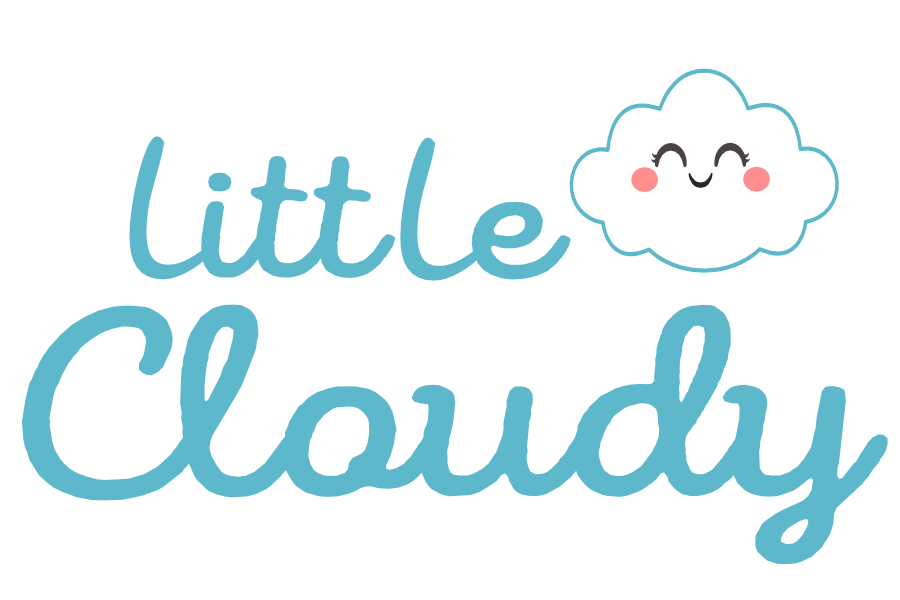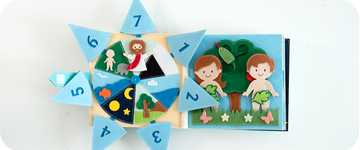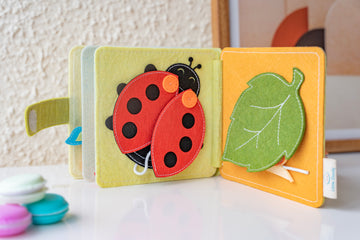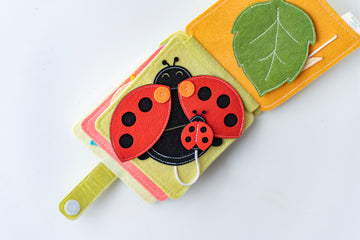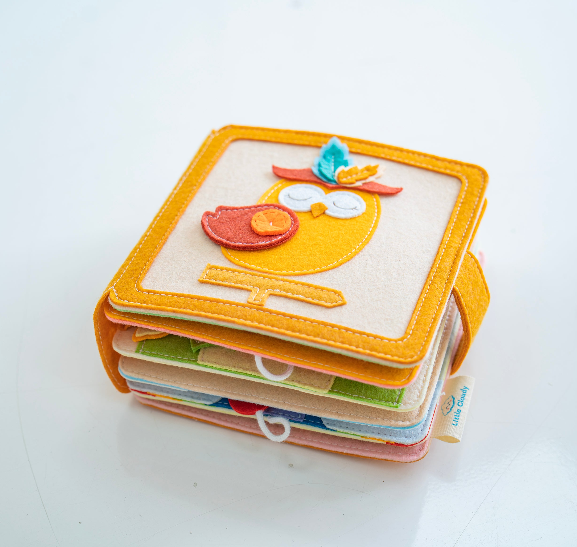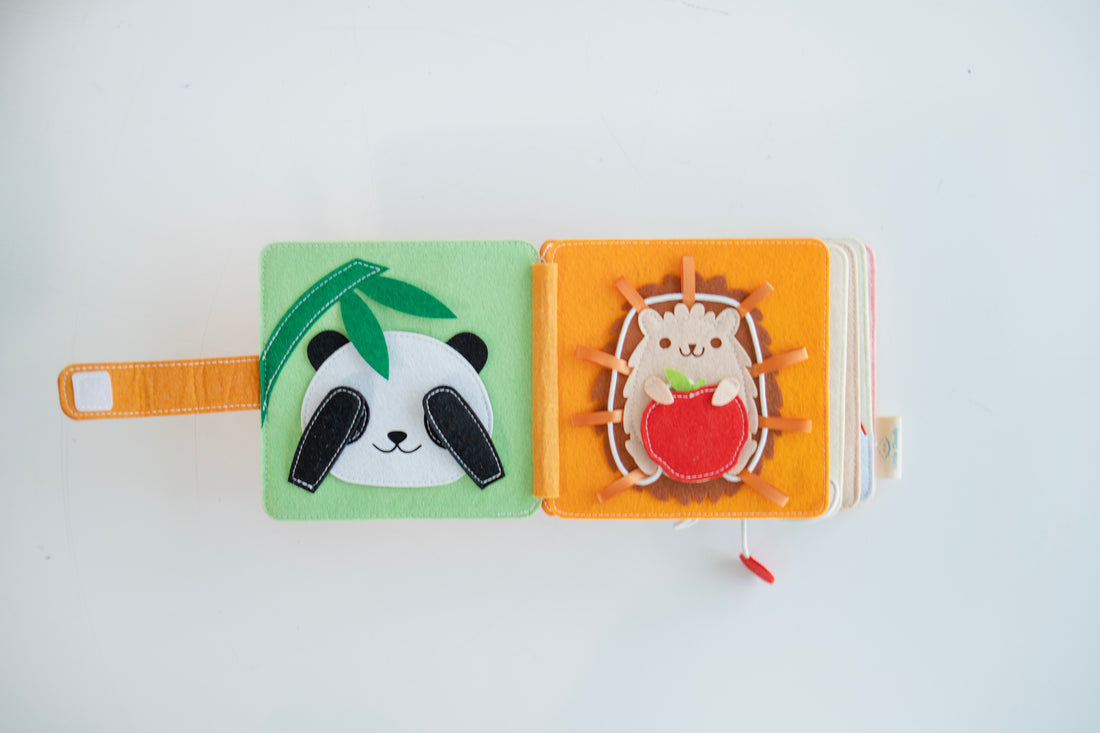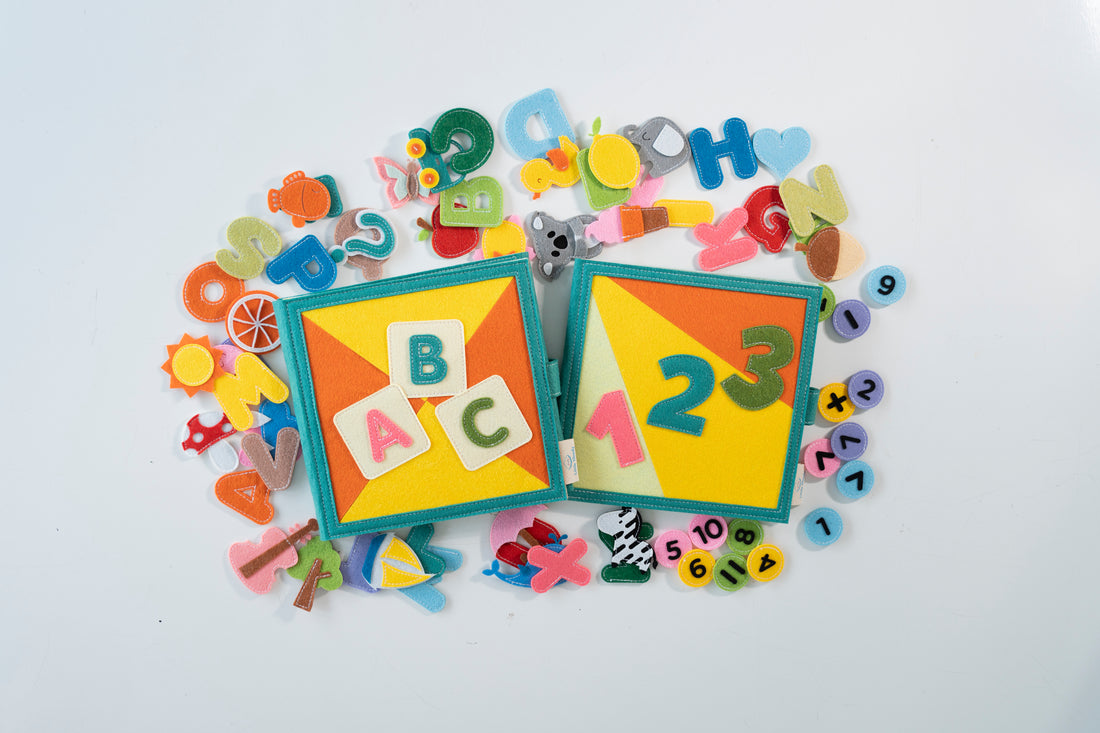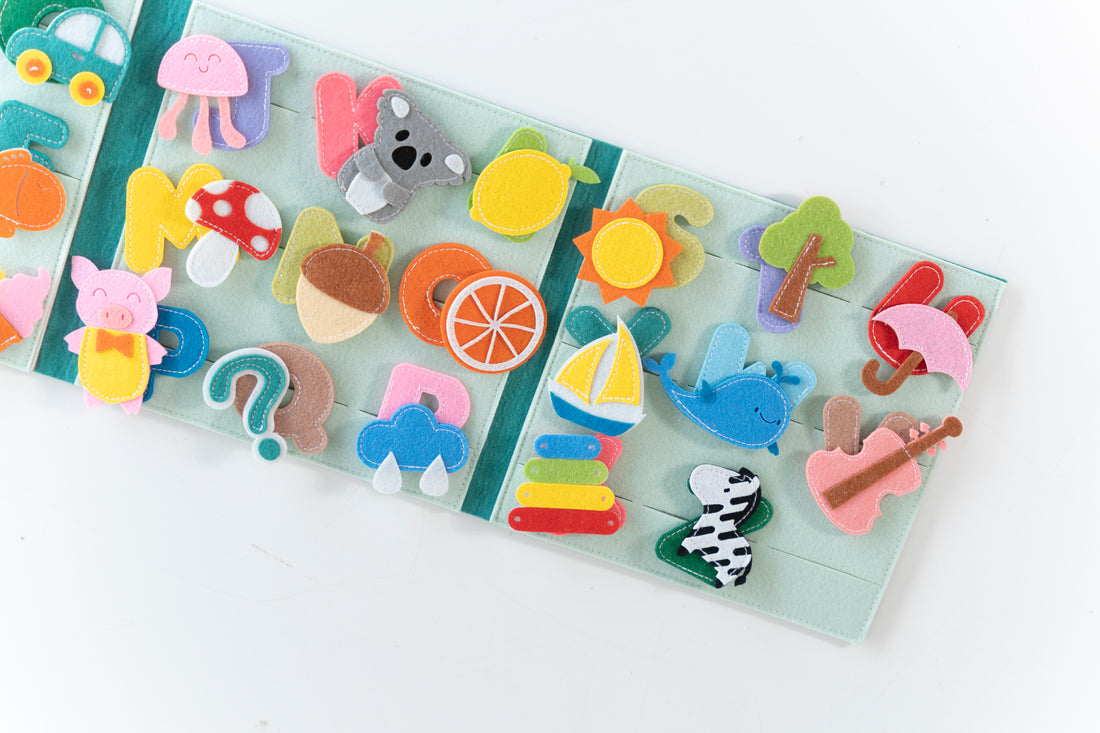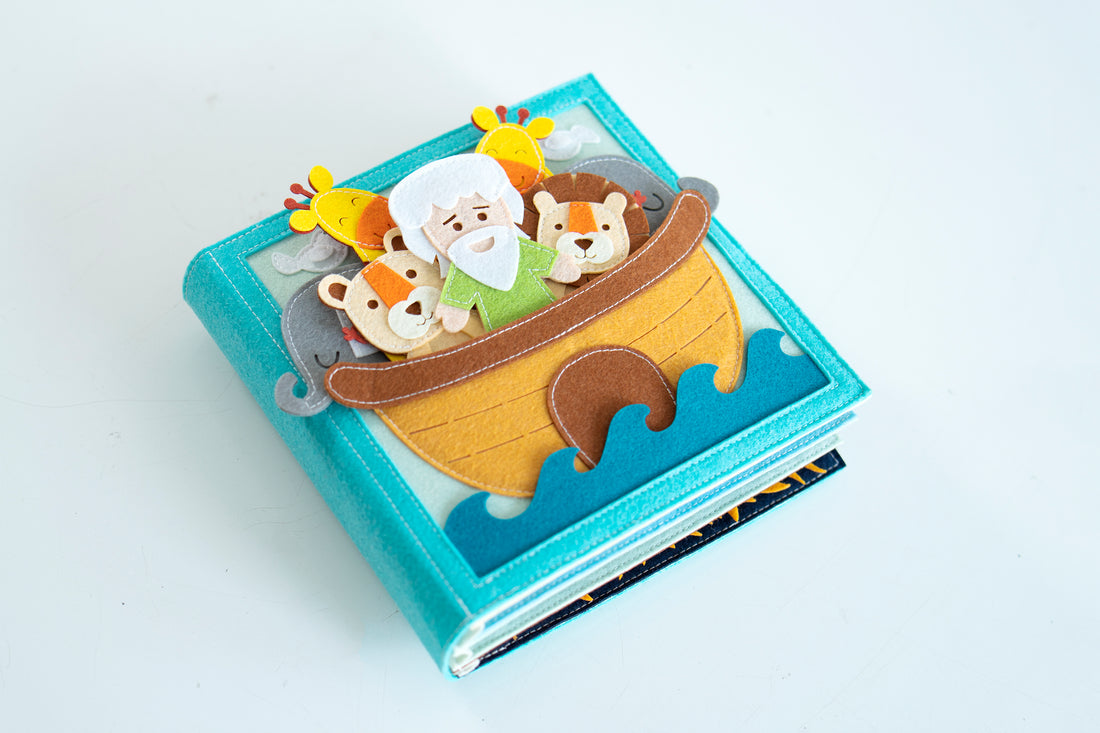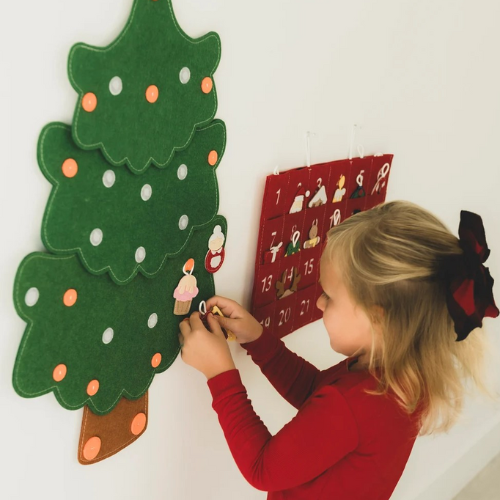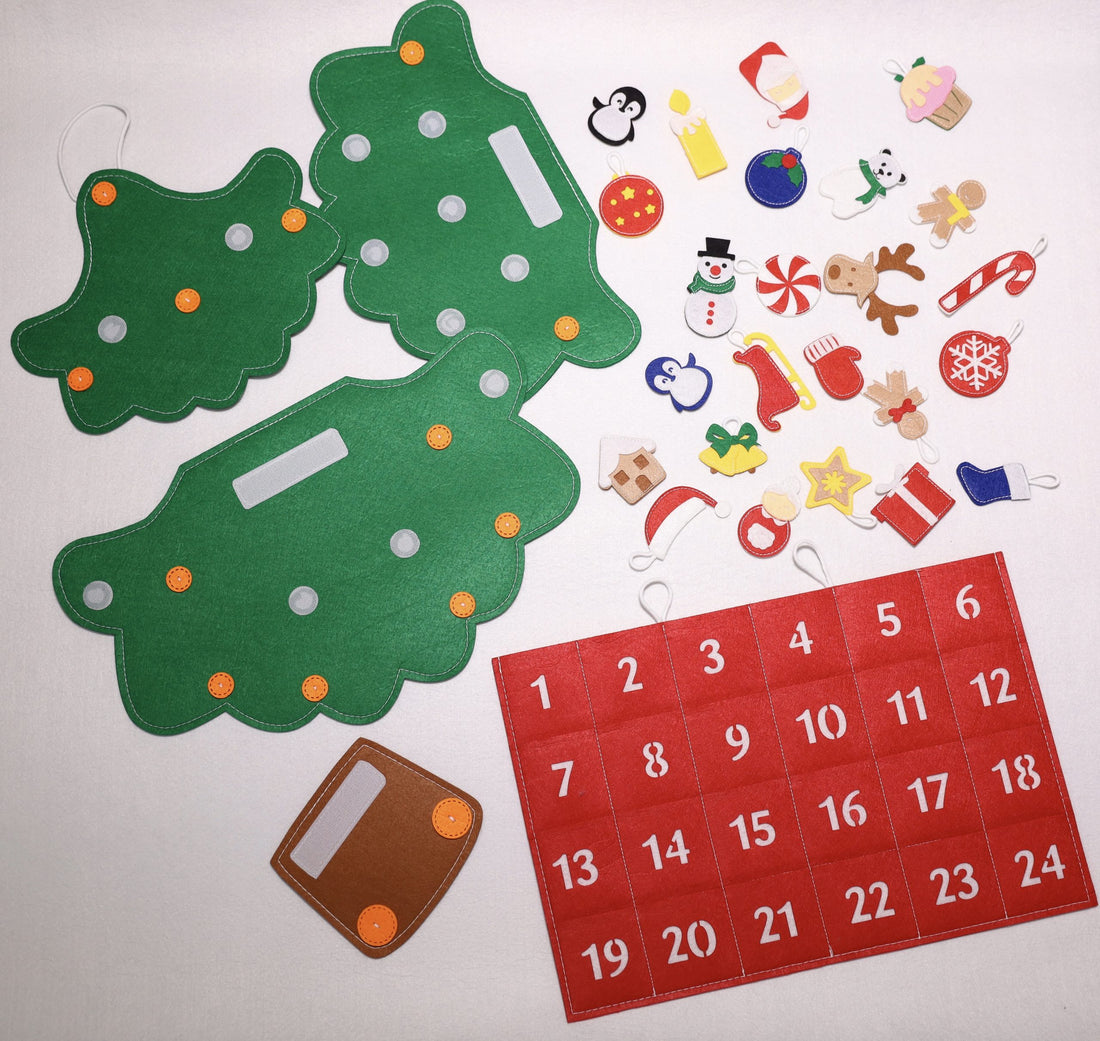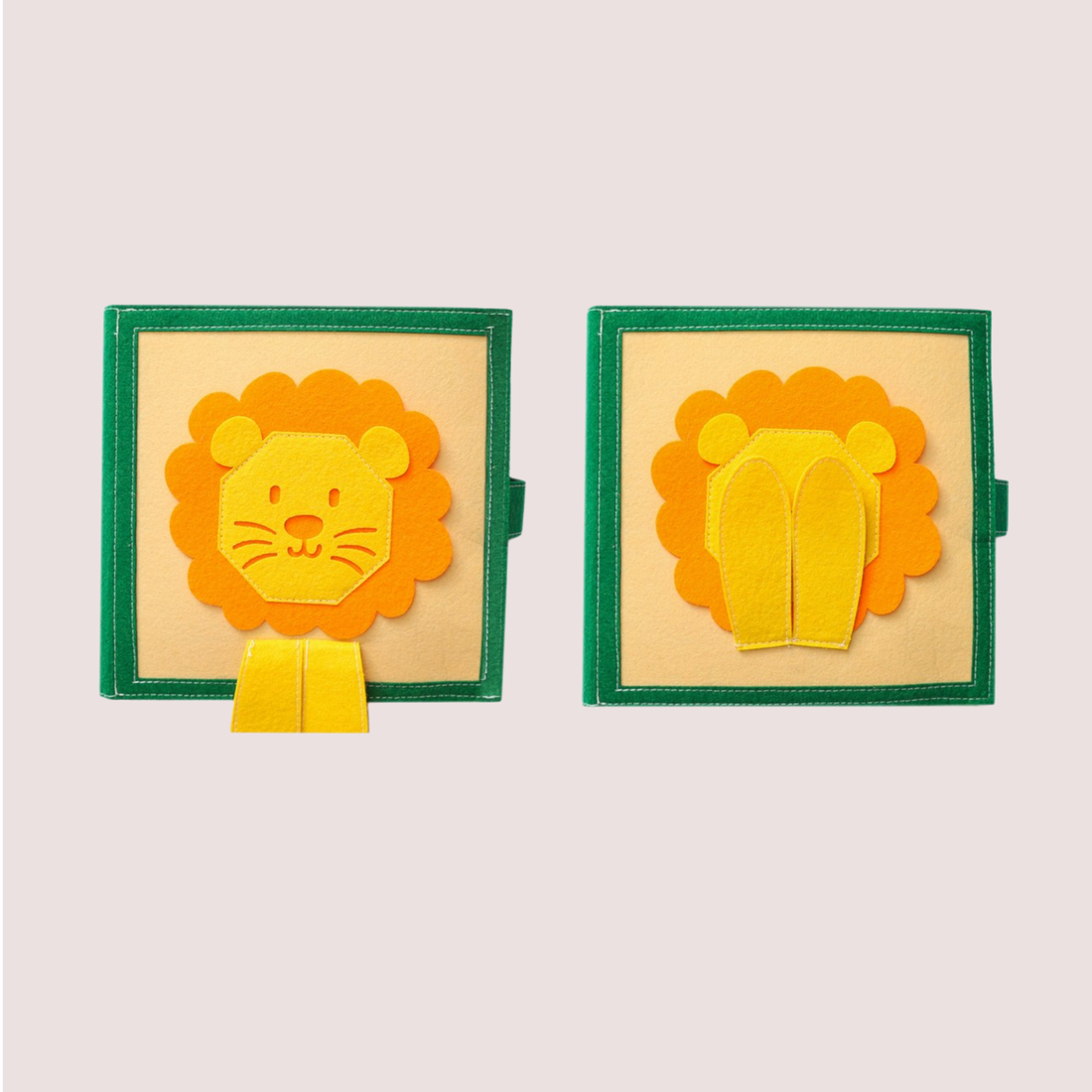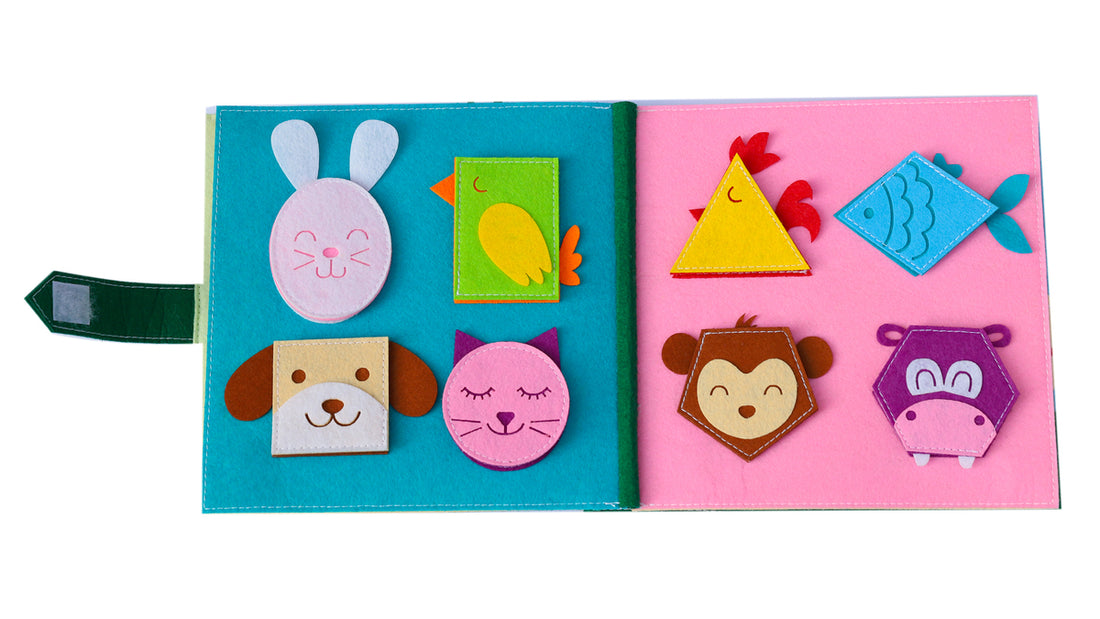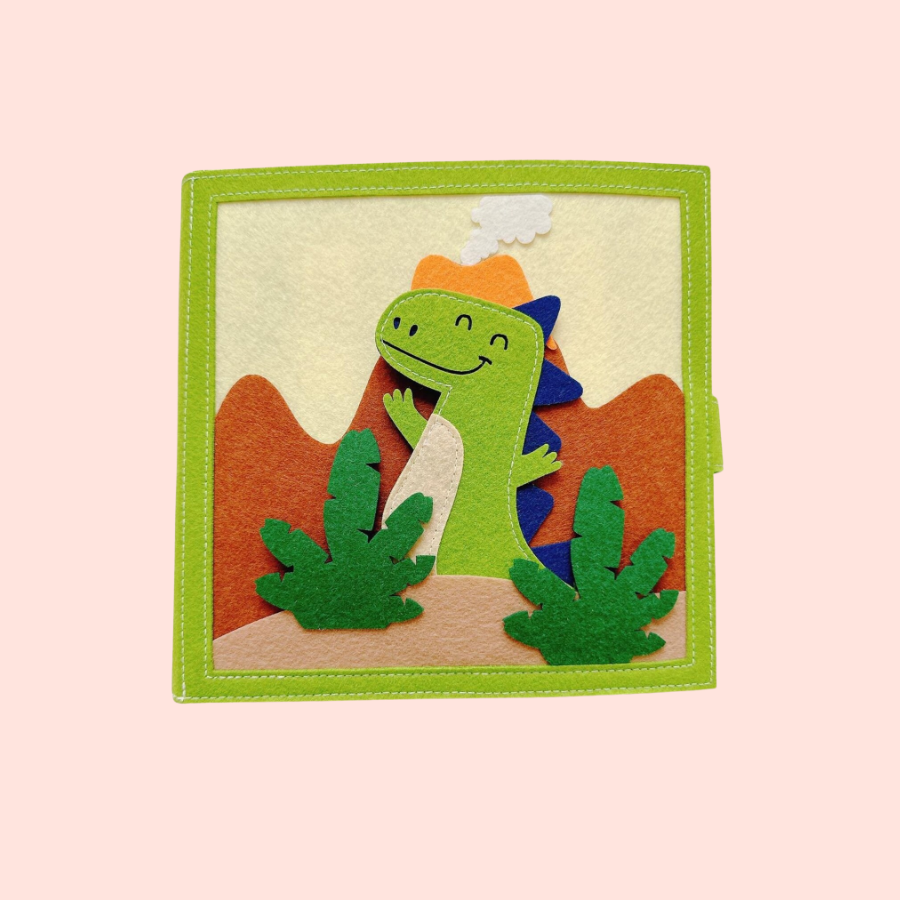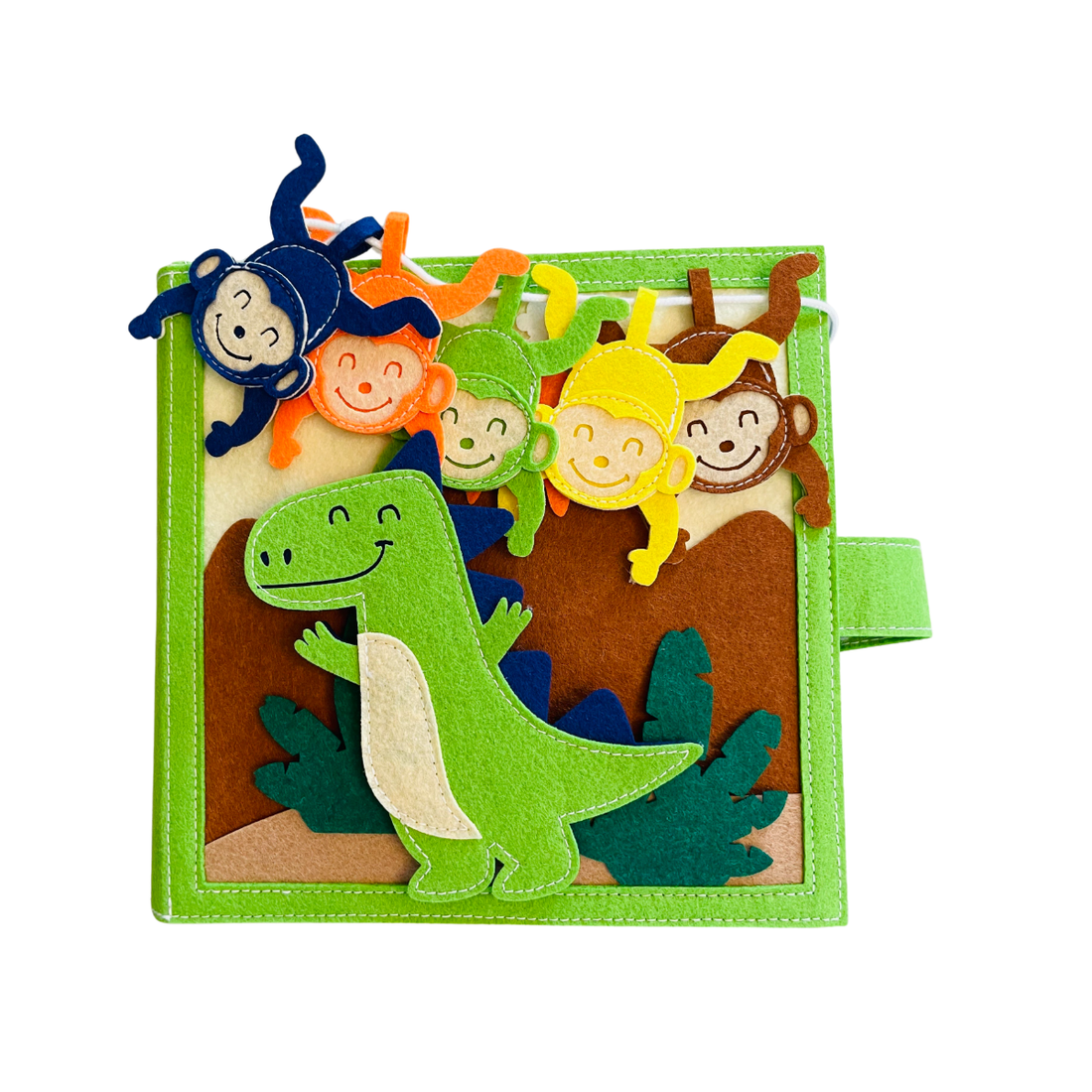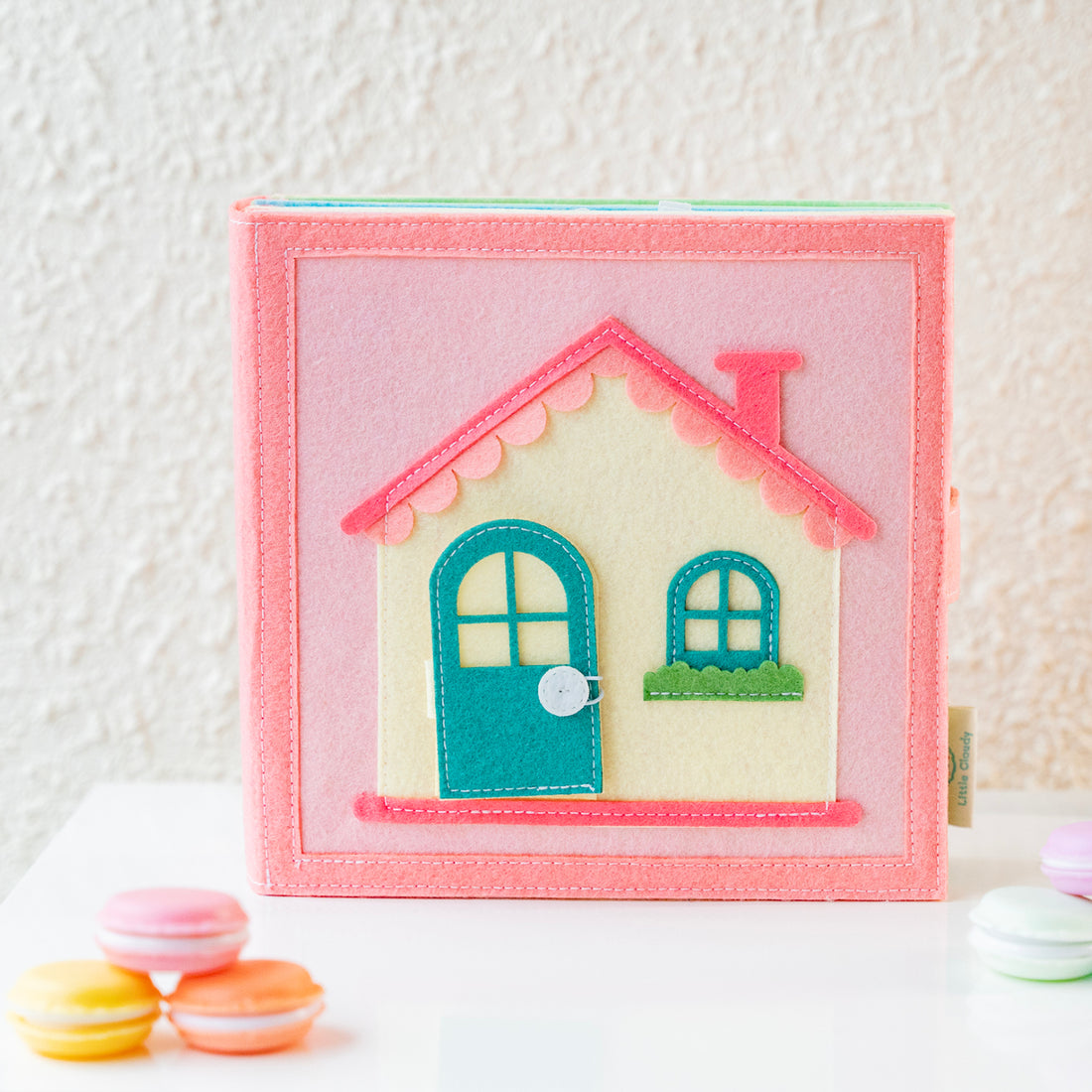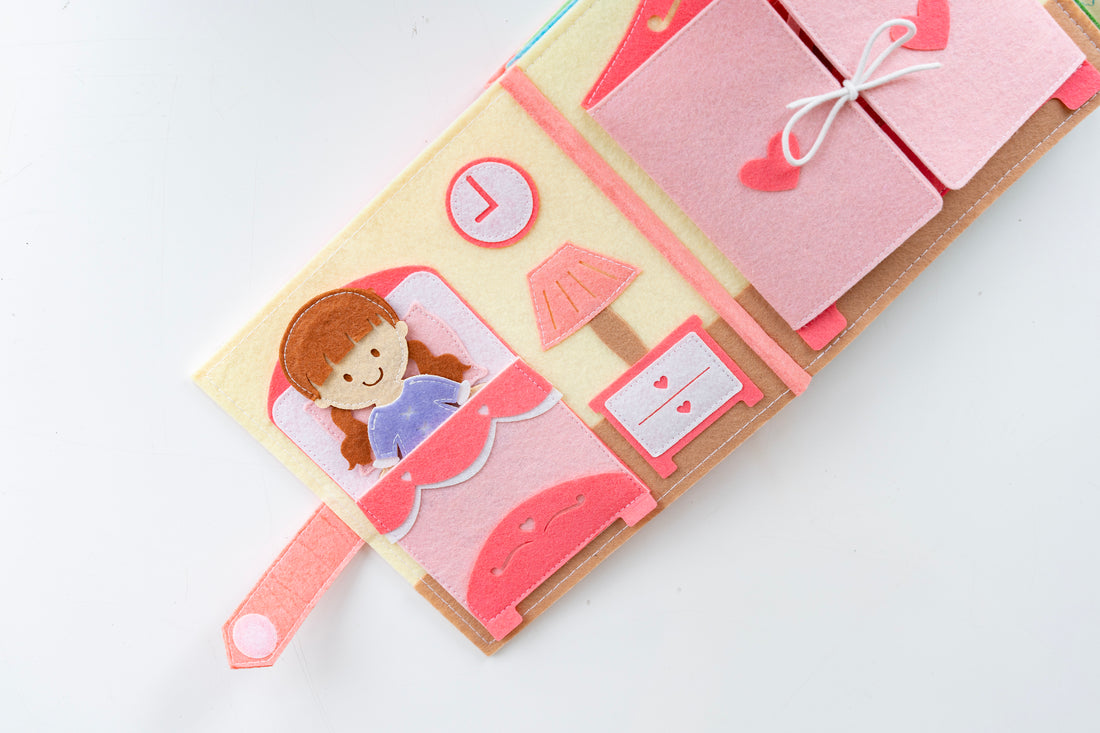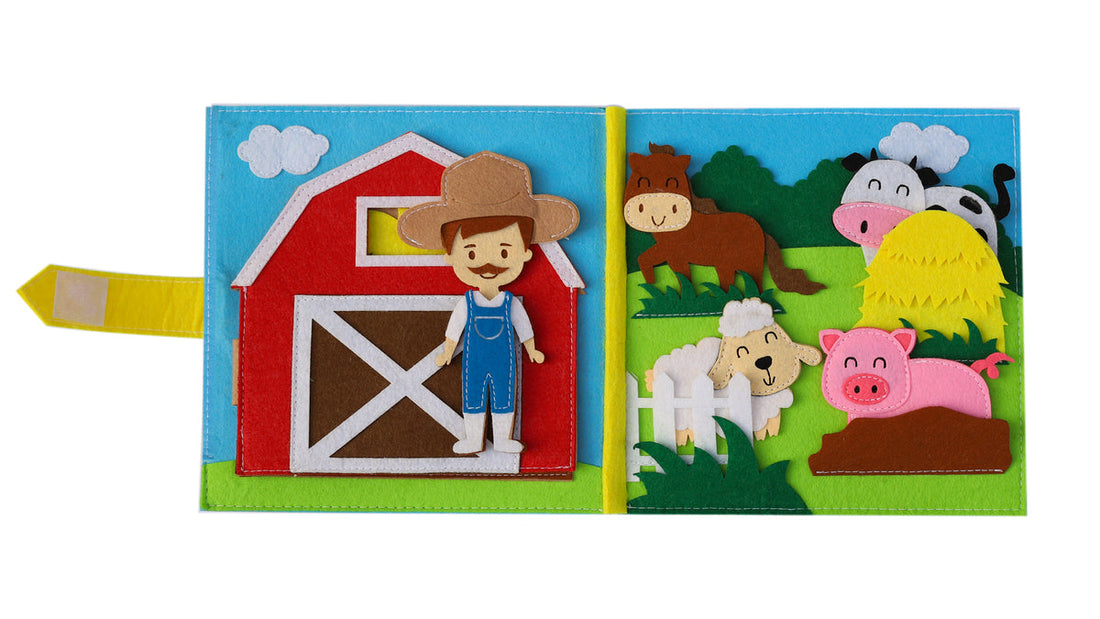In this article, we will explore the Montessori approach to quiet books and how they can benefit your child's development.
Discover the right materials to use and learn how to design and create a Montessori-inspired quiet book.
Plus, we'll share some tips on how to keep your little one engaged with this wonderful learning tool.
Understanding the Montessori Approach to Quiet Books
You'll gain a deeper understanding of the Montessori approach to quiet books.In the Montessori philosophy, quiet books are designed to promote independent learning and engage a child's senses. These books are carefully crafted to encourage exploration and discovery. The materials used in quiet books are natural and tactile, allowing children to experience different textures and sensory inputs.
The activities in these books are also designed to target specific skills like fine motor development, hand-eye coordination, and problem-solving. The Montessori approach to quiet books emphasizes self-directed learning, where children have the freedom to choose the activities they're interested in and work at their own pace.
Through these books, children not only learn important skills but also develop concentration, focus, and a sense of accomplishment.
Benefits of Quiet Books for Toddler Development
There's a lot to gain from incorporating these interactive fabric activities into your child's playtime.Quiet books provide numerous benefits for your toddler's development. They promote fine motor skills by encouraging your child to manipulate buttons, zippers, and Velcro. These activities help improve their hand-eye coordination and dexterity.
Additionally, quiet books enhance cognitive skills as they introduce concepts such as shapes, colors, numbers, and letters. Your child can learn about animals, fruits, and even daily routines through the pages of a quiet book.
Moreover, these fabric books stimulate creativity and imagination, allowing your toddler to engage in pretend play and storytelling. They also foster independent play, as children can explore the different activities at their own pace.
Choosing the Right Materials for a Montessori-inspired Quiet Book
When selecting materials for your fabric activity book, consider using natural, sensory-rich elements that will engage your child's curiosity. Opt for materials like soft felt, smooth cotton, or textured burlap. These natural fabrics provide different tactile experiences that will stimulate your child's senses as they explore the pages of their quiet book.Incorporate items like wooden buttons, colorful ribbons, or jingling bells to add auditory stimulation and encourage fine motor skills. Choose materials that are safe and non-toxic, ensuring that your child can explore their quiet book independently without any worries.
Remember to think about the colors and patterns of the materials as well, as these can also capture your child's attention and spark their imagination.
Designing and Creating a Montessori Quiet Book for Your Toddler
To create an engaging fabric activity book for your little one, incorporate natural materials that provide different tactile experiences and add auditory stimulation.Use fabrics with different textures like soft fleece, smooth silk, and rough burlap. Add buttons, zippers, and Velcro for fine motor skills development. Include crinkly materials like cellophane or foil to engage their senses. Sew in pockets to hide surprises or small toys that your child can discover.
Incorporate natural elements like wooden buttons or beads for a sensory experience. You can even attach small bells or rattles to create auditory stimulation. Remember to keep the activities age-appropriate and safe, avoiding small parts that can be a choking hazard.
Tips for Engaging Your Toddler With a Montessori Quiet Book
Using a variety of textures and interactive elements in your fabric activity book will captivate your child's attention and encourage their exploration. Incorporate different fabrics such as soft fleece, smooth satin, and bumpy corduroy to provide a tactile experience.Add buttons, zippers, and Velcro closures that your child can manipulate, promoting fine motor skills. Include pockets where they can hide small objects or finger puppets for pretend play. Sew on different shapes and colors to promote shape recognition and color identification.
Integrate sensory elements like crinkly materials or squeaky toys that will engage their senses. By including these interactive elements, your child will be fully immersed in their quiet book, fostering their curiosity and creativity.
How Can I Introduce a Montessori-Inspired Quiet Book to My Toddler?
To introduce a Montessori-inspired quiet book to your toddler, start by selecting a book with interactive activities that promote learning and independence.Show your child how to use each page and encourage them to explore and manipulate the materials on their own.
Create a quiet and calm environment for them to engage with the book, and make it a part of their daily routine.
This hands-on approach will help foster their cognitive and fine motor skills while encouraging independent play.
Are There Any Safety Concerns I Should Be Aware of When Designing and Creating a Quiet Book for My Toddler?
When designing and creating a quiet book for your toddler, it's important to be aware of any safety concerns. Ensure that all materials used are non-toxic and child-friendly. Avoid small parts that could pose a choking hazard and make sure everything is securely attached to prevent any accidents.
Additionally, consider the age-appropriateness of the activities and materials used in the book. By prioritizing safety, you can create a fun and educational experience for your little one.
Can a Quiet Book Help My Toddler Develop Fine Motor Skills?
A quiet book can definitely help your toddler develop fine motor skills. By engaging with different activities like buttoning, zipping, and lacing, they'll be practicing hand-eye coordination and finger dexterity. These skills are crucial for tasks like tying shoelaces or holding a pencil later on.Additionally, the Montessori approach used in quiet books promotes independence and self-discovery, allowing your toddler to explore and learn at their own pace.
What Age Is Appropriate to Start Using a Montessori Quiet Book With My Toddler?
Starting your toddler with a Montessori quiet book is a great way to engage their fine motor skills. While there isn't a specific age requirement, most children are ready to explore these books around 18 months to 2 years old.
At this stage, they're developing hand-eye coordination and can benefit from the interactive activities in the book. Remember to choose a quiet book with age-appropriate tasks to keep them engaged and challenged as they grow.
How Can I Make Sure My Toddler Stays Engaged With a Quiet Book for a Longer Period of Time?
To make sure your toddler stays engaged with a quiet book for a longer period of time, you can try a few things.First, choose a quiet book that aligns with your child's interests and abilities.
Second, create a dedicated quiet book area with comfortable seating and good lighting.
Third, introduce the quiet book during a calm and quiet time of the day.
Incorporating a Montessori-inspired quiet book into your toddler's playtime can provide numerous benefits for their development.
By choosing the right materials and designing a book that aligns with Montessori principles, you can create an engaging and educational tool for your child.
Remember to actively engage with your toddler while they explore the quiet book, offering guidance and support as they learn and grow.
With a Montessori approach, your toddler can thrive and enjoy hours of meaningful play.
